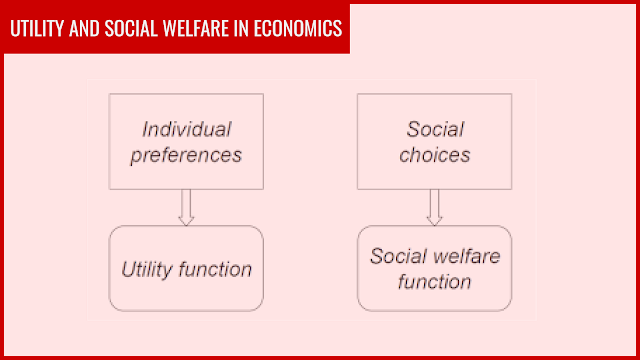Microeconomics l From Utility to Social Welfare | #economics
https://global-fintech.blogspot.com/2016/01/utility-welfare.html
Initially, utility was considered to be a measure of people's happiness in Economics, but how do we measure happiness mathematically? With time, in order to give utility some kind of material representation, it started to be considered as a way of description consumer preferences. Indeed, the fact that one product is preferred to another manifests that one particular consumer gains more utility from the product he prefers. Aggregated, many utilities build social welfare (in Economics, in form of the so-called social welfare function), thus shaping the so-called societal choice (social or group preferences).
 |
| Utility and Social Welfare in Economics |
From Individual Utility to Social Welfare
Welfare is a function of individual utilities. Neverheless, taking into consideration the fact that people's preferences are highly different in reality, how do we we manage to unite various utility functions inside one welfare function? That can be achieved only in theory so that different economic models could be constructed. There are different approaches to that issue.
 |
| From utility to social welfare functions |
Benefitting from the definition of utility as consumer preference, we conclude that utilities are comparable. Therefore, making comparisons among single individuals, we derive not only ordinal (= what is the first and what is the second in the order of preference), but also cardinal (= to which extent one prefers product 1 to product 2) utility functions which are comparable. In that form, we can aggregate them in social welfare functions.
Deriving the Social Welfare Function
We derive the welfare function (W) out of numerous utility functions - W(U1,U2,…,Ui). The welfare function is often called the Bergson-Samuelson social welfare function. There are different approaches the social welfare function. We quote some of them:
- Utilitarian (Benthamite) welfare function: 𝑊(𝑈1,…,𝑈n) = Σ𝜃𝑖𝑈𝑖
- Egalitarian welfare function: 𝑊(𝑈1,…,𝑈n) = Σ𝑈𝑖−𝜆Σ[𝑈𝑖−min(𝑈𝑖)]
- Rawlsian welfare function: 𝑊(𝑈1,…,𝑈n) = min (𝑈𝑖)
Now, let's discuss each of the one by one.
However, there is a theorem which complicates that solution, namely the Arrow's Impossibility Theorem. According to Arrow's Impossibility Theorem, there is no rule, satisfying a number of 'reasonable' basic requirements, which can convert individual preferences into a social preference ordering. Thus, there is no general way of aggregating single utilities into a social preference.
Welfare Theorems
Egalitarian Welfare Function
Egalitarianism (egalitarian welfare function) proposes us to distribute the resources based on the requirements of equal allocation not taking into account the utilities themselves.Utilitarian Welfare Function
Utilitarianism (utilitarian or Benthamite welfare function) concentrates on utility, however it underestimates the necessity of the satisfaction distribution between persons and regards the welfare function as the sum of utilities, which can lead to fundamental human rights' violations.Rawlsian Welfare Function
The Rawlsian approach (Rawlsian welfare function) challenges utilitarianism. Rawls points out that inequalities are only acceptable as long as they lead to or are compatible with Pareto improvements and individual preferences should form the base for social preferences.However, there is a theorem which complicates that solution, namely the Arrow's Impossibility Theorem. According to Arrow's Impossibility Theorem, there is no rule, satisfying a number of 'reasonable' basic requirements, which can convert individual preferences into a social preference ordering. Thus, there is no general way of aggregating single utilities into a social preference.
Welfare Theorems